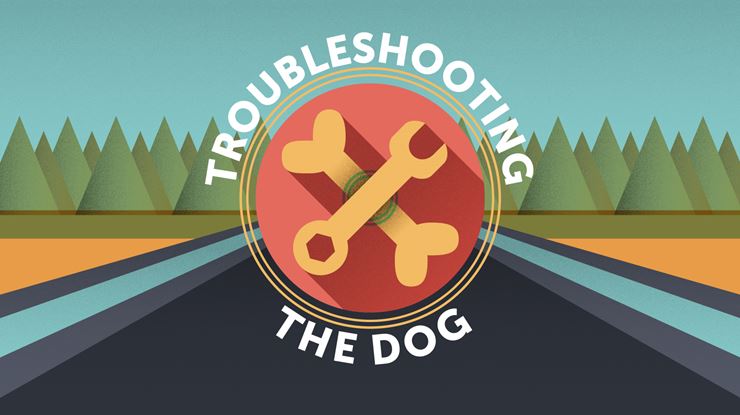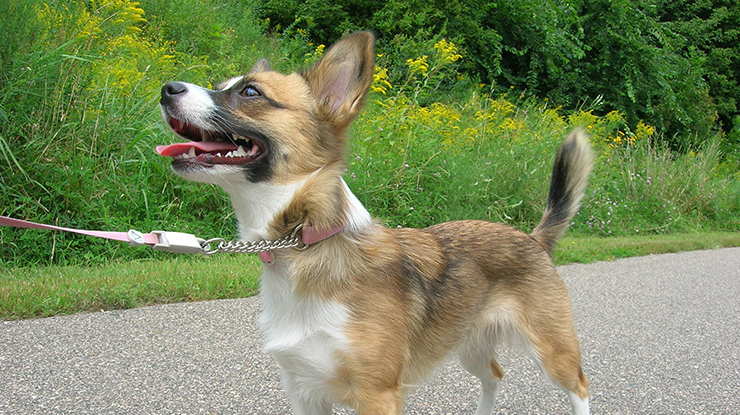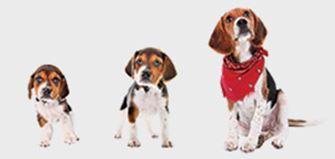
Troubleshooting the Dog: Loose-Leash Walking
Dear Troubleshooter,
I recently rescued my dog Daisy, she’s super sweet but needs tons of exercise. Every time I walk her, she pulls so hard that she chokes herself. And she switches sides so often that I keep tripping over her. I’m worried I’m going to step on her or sprain an ankle. I keep pulling her back and telling her “heel,” but she’s not listening.
I'm envious of my neighbors; their dogs happily walk by their side. How do I teach Daisy to walk nicely on leash so I can enjoy our strolls?
Sincerely,
Pulled by Pooch
Dear Pulled by Pooch,
I’m sorry you’re struggling with leash walking but glad you reached out because it’s vital for your safety (and Daisy’s) to teach her polite leash walking skills. If she continues to pull that intensely, I’m worried she’ll injure her neck.
The first step to loose-leash walking is you gaining confidence in your skills, so it’s best to start training in the house.

Mastering the mechanics inside
Grab the leash handle AND an area of the leash close to the handle (for safety), but never wrap the leash around your wrist, or you risk injury.
Next, hold the leash where you’re strongest, at your core. It’s vital your hand stays glued to your belly because if your hand moves forward, you’ll inadvertently reward Daisy’s pulling.
Improperly holding the leash allows your dog to move forward when she pulls and jeopardizes your safety. It’s much easier for Daisy to knock you down if your leash is four feet away from your body.
It’s essential that Daisy is in the proper position before you start moving. If your leash is in your right hand, she should be on your left side. Rewarding Daisy is easier with your free hand. Reinforce Daisy when she’s on your left, and she’ll be motivated to maintain her position once you move.
Take a few steps forward, and if Daisy stays on your left side, reward her while you’re walking. If you wait for her to stop, you’ll reward the wrong behavior. If she pulls, gently guide her back to your side, but don’t reward her until she’s maintained proper position for five seconds. Otherwise, you'll pay her for pulling and then walking back.
If Daisy is happily complying, cue “let’s go” as you step forward. Continue rewarding your dog when there’s slack in the leash (a “J” shape). Repeat every day, adding small distractions, so her skills are sharp before heading outside.
Step Two: Real-world training
Once Daisy understands your expectations and you’re comfortable with the handling skills required to leash train, it’s time to walk outside.
- Require Daisy to “wait” at the door. If she races through the threshold, she’s unfocused before your walk begins.
- Use Daisy’s favorite treat outside. You’re competing with squirrels, kids, dogs, and more, so you need high-value rewards like unseasoned meat, freeze-dried raw treats, even her favorite toy would work nicely.
- Always keep Daisy’s leash glued to your belly and reward for ANY slack, even if the leash is loose for a few seconds. Depending on what Daisy enjoys, you may find sniffing or greetings are high-value rewards—using real-world reinforcers allows you to prevent unhealthy weight gain by using too many treats. When interacting with other dogs, please don’t give Daisy food rewards, the unknown dog may have food aggression.
- In the beginning, keep sessions short (10 minutes). You can use a front clip harness after your training sessions to prevent undoing Daisy's new skills and keep her safe when you’re walking for exercise.

Step Three: Revise training based on Daisy’s responses
If you’re still struggling or Daisy’s too excited to take treats outside, play games like “wait” and “find treat” in the house before training walks. She’ll exert energy, so it’s easier for her to focus.
However, if she’s doing well, add five minutes each week to her outside leash training sessions.
Always remember to reinforce Daisy when the leash is slack, use her favorite rewards to reinforce good behavior outside and never treat your dog when she’s pulled and then walked back to your side. Otherwise, you'll reward the wrong behavior.
Now, grab that leash and start training!
The Troubleshooter














